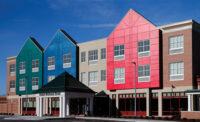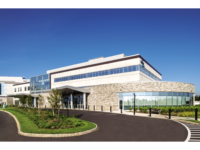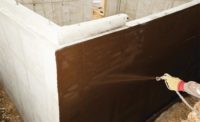After suffering the impact of the 2006 economic downturn, the commercial construction industry is experiencing sizeable growth this year that is driven by increases in office building and health care facility construction according to several industry reports.
The commercial construction resurgence is also ushering in heightened expectations for architects to design buildings to deliver cost effective durability, functionality, building code compliance, and overall energy efficiency.
This spike in both workload and complexity is placing added pressure on architects and specifiers. To thrive in the current marketplace, architects must increase their own efficiency across each project while avoiding errors and omissions that can cause delays at best, or professional liability at worst. Ultimately, an architect’s success is measured by the ability to create buildings that will meet or exceed current and future needs—on time and without incident.
As a result, architects need solutions that can help alleviate some of these stressors to help them safely, efficiently and successfully build better.
Avoiding Errors, Improving Efficiency
With the surge of educational, health care facilities, and office buildings underway, architects have a dizzying array of interrelated product options and decisions to make throughout the design process. Much like a house of cards, one mistake and critical building systems can be compromised.
For example, the building envelope functions as a critical layer of protection to prevent moisture from accumulating and damaging the building. As a result, specifying and detailing state-of-the-art building envelope components demands a significant, time consuming, multi-disciplinary approach due to the number of individual building elements that must be successfully combined. If the products are chosen or composed incorrectly, it can compromise the integrity of the building and lead to significant complications for the building occupants and owners.
As part of the building envelope, exterior wall assemblies do the heavy lifting to ensure the term performance and efficiency of commercial buildings. Typically, architectural considerations when designing exterior walls should include the following key factors:
- Insulation: Walls are critical in meeting increasingly stringent energy codes. Therefore every opportunity should be used to contribute to energy efficiency such as in stud cavities and installing continuous insulation over framing.
- Air Intrusion: Air intrusion is not only a significant contributor to energy inefficiency, it is also one of the most significant sources of moisture that may cause condensation inside the wall. The accumulation of hidden moisture may lead to corrosion of wall framing materials as well as to the growth of mold and mildew. Therefore, the wall system must be sealed with an effective air barrier system.
- Vapor Intrusion:Moisture can also intrude via vapor permeation. Thus, a properly designed and placed vapor retarder may be needed to manage seasonal moisture vapor permeation.
- Water Intrusion:The intrusion of liquid exterior water must also be resisted and managed.
- Water Drainage:In barrier systems, the cladding must be weather resistant with sealed joints to resist and drain water at the surface. In rainscreen systems with a drainage cavity, like brick or CMU veneer, drainage planes must be established behind the veneer with resisting layers, flashings and weepholes properly placed and protected against clogging.
- Ventilation:In cavity walls, allowing air in to ventilate and dry is as important as allowing water to drain out, both occurring via protected and effective weep openings.
- Bracing:For some veneers like brick and CMU, steel studs must be appropriately braced or stiffened to prevent flexural cracking.
- Masonry Veneer Anchors and Ties:Masonry anchors that effectively transfer wind and seismic loads directly to the steel stud framing must be used.
- Sealing Penetrations:By necessity, fasteners and anchors create hundreds of penetrations in air and water resisting layers. Each penetration must be easily yet effectively sealed with washers designed and tested for the application.
- Air/Water Resistance Ratings:Complete system testing and ratings must demonstrate performance.
- Fire Resistance Ratings:Complete system ratings for structural resistance and containment, propagation resistance, and floor-to-floor fire stopping must be established as needed depending on project conditions.
The list of performance factors that must be considered is daunting. Evaluating and researching the matrix of individual building envelope product options is an extremely time consuming and intensive process. So, it is not surprising there has been growing interest in systemized solutions that help bypass this exhaustive review to simplify and streamline the design and specification process without sacrificing accuracy or adding cost.
“The building industry has to stop only producing products and to start developing and producing building assembly systems,” says Laverne Dalgleish, executive director of the Air Barrier Association of America. “By addressing the functions of a building assembly on a system basis, you will receive something that will work as intended and a building that will perform and be resilient.”
Building manufacturers are answering this challenge.
Taking Guesswork out of the Specification
Gaining rapid favor among architects, complete wall systems feature components that are tested together to produce systemized performance and codes and standards compliance data. These next-generation complete wall systems provide thermal efficiency, continuous insulation, air and water management, vapor resistance and veneer anchoring systems, plus design options that are engineered to maximize performance by climatic region.
Supported by a limited warranty with a single point of contact, the cost-effective complete wall systems are designed to meet and exceed new energy and building codes while using familiar and well-established building materials and construction methods. In addition, the systemized approach to walls decreases potential liability and improves the architect’s ability to efficiently specify and detail quality assemblies with components that are compatible, code compliant and warranted to work together to deliver optimal performance.
Owens Corning worked closely with several other industry leaders and their products to create completely compatible, code compliant and warrantied systems. The result is the collection of CavityComplete Wall Systems. In fact, all parties involved—Owens Corning Sales LLC, Tremco, Mortar Net Solutions, Heckmann Building Products, and Rodenhouse Inc.—assembled a cross-functional team of building science technical experts and independent third parties to conduct extensive testing on the portfolio of each wall system solution. The independent testing verified the system is effective and compliant with ASTM E2357 air leakage tests, ASTM E331 water penetration tests, ASTM E119 fire resistance tests, and the NFPA 285 fire propagation test.
Mark Kalin FAIA, FCSI, president of Kalin Associates is among the architects who are embracing wall systemization.
“Architects are always looking for ways to improve the performance of their exterior wall assemblies and the CavityComplete Wall System helps make the complicated process more predictable by leveraging the knowledge of multiple product manufacturers,” said Kalin. “The wall system provides documentation that architects can submit to building officials demonstrating that the assembly meets mandatory building code fire containment, air leakage, water penetration and thermal resistance requirements.”
Long the trend in roofing, now exterior walls are blazing the path toward systemization in commercial building, delivering proven, cost-effective construction methods and tested building materials to provide added peace of mind for commercial building designers, contractors, owners and occupants.







Report Abusive Comment